Best Art Decor for Interior Design and Furniture in Saudi Arabia
Saudi Arabia is a country that combines tradition and modernity, culture and innovation, history and progress. The Saudi people have a sophisticated and refined taste, which is reflected in their homes and interiors. In this blog post, we will explore the art decor for interior design and furniture in Saudi Arabia, and how you can add glamour and elegance to your home with this style.
What is Art Decor for Interior Design and Furniture?
Art decor for interior design and furniture is a style that originated in the 1920s and 1930s, influenced by the Art Deco movement in art, architecture, and fashion. Art decor for interior design and furniture is characterized by its use of geometric shapes, symmetrical patterns, metallic colors, and luxurious materials. Art decor for interior design and furniture is also known for its fusion of different styles and influences, such as classical, oriental, exotic, and futuristic.
Art decor for interior design and furniture is not only about making a space look glamorous and elegant, but also about making it functional and comfortable. Art decor for interior design and furniture involves careful planning, selection, and arrangement of furniture and accessories, to create a harmonious and balanced space that suits the needs and preferences of the users.
Why is Art Decor for Interior Design and Furniture Popular in Saudi Arabia?
Art decor for interior design and furniture is popular in Saudi Arabia for several reasons. First, art decor for interior design and furniture matches the Saudi people’s preference for luxury, quality, and sophistication. The Saudi people appreciate the fine craftsmanship, the exquisite details, and the high-end materials that art decor for interior design and furniture offers. Art decor for interior design and furniture also reflects the Saudi people’s pride and confidence in their culture and identity, as it incorporates elements of their heritage, such as the Islamic art, the Arabian motifs, and the desert colors.
Second, art decor for interior design and furniture suits the Saudi people’s lifestyle and needs. The Saudi people value their privacy, their family, and their hospitality, and they want their homes to reflect these values. Art decor for interior design and furniture allows them to create spaces that are cozy, intimate, and inviting, as well as spacious, functional, and versatile. Art decor for interior design and furniture also enables them to express their personality, their taste, and their mood, as it offers a variety of styles, colors, and themes to choose from.
Third, art decor for interior design and furniture adapts to the Saudi people’s environment and climate. The Saudi people live in a country that has a hot and dry weather, and they want their homes to provide them with comfort and relief. Art decor for interior design and furniture helps them to create spaces that are cool, airy, and bright, as well as warm, cozy, and dark. Art decor for interior design and furniture also enhances the natural beauty and scenery of their country, as it uses materials, textures, and colors that complement the desert, the oasis, and the sea.
How to Create a Glamorous and Elegant Home with Art Decor for Interior Design and Furniture in Saudi Arabia?
Creating a glamorous and elegant home with art decor for interior design and furniture in Saudi Arabia is not a difficult task, if you follow some simple steps and tips. Here are some of the best practices and recommendations for art decor for interior design and furniture in Saudi Arabia:
- Start with a clear vision and goal. Before you start designing and decorating your home, you need to have a clear idea of what you want to achieve and how you want your space to look and feel. You can start by creating a mood board, a collage of images, colors, textures, and materials that inspire you and represent your desired style and theme. You can also browse through magazines, websites, blogs, and social media platforms, such as RIS Store, A Interiors, or Art Deco Design, to get some inspiration and ideas from the experts and professionals in the field of art decor for interior design and furniture.
- Choose a color palette and scheme. Color is one of the most important elements of art decor for interior design and furniture, as it can create different moods, emotions, and effects in the space. You can choose a color palette and scheme that suits your personality, preference, and purpose. For example, you can opt for a glamorous and elegant color scheme, such as gold, silver, black, and white, to create a luxurious and sophisticated space. Or, you can go for a vibrant and lively color scheme, such as red, yellow, green, and blue, to create a cheerful and energetic space. You can also mix and match different colors, such as pink and turquoise, or orange and purple, to create a fun and playful space. You can also use color to highlight and accentuate certain features or areas in the space, such as a wall, a ceiling, a door, or a window.
- Select the right furniture and accessories. Furniture and accessories are the essential components of art decor for interior design and furniture, as they can provide function, comfort, and style to the space. You can select the right furniture and accessories that match your color palette and scheme, as well as your theme and style. For example, you can choose furniture and accessories that reflect the Art Deco movement, such as geometric shapes, symmetrical patterns, metallic colors, and luxurious materials. Or, you can choose furniture and accessories that reflect the Islamic art, such as arabesque patterns, arches, domes, and minarets. Or, you can choose furniture and accessories that reflect the Arabian motifs, such as camels, palm trees, stars, and crescents. Or, you can choose furniture and accessories that reflect the futuristic influences, such as glass, metal, leather, and marble. You can also mix and match different furniture and accessories, such as classic and modern, or simple and complex, to create a unique and eclectic space.
- Add some lighting and artwork. Lighting and artwork are the finishing touches of art decor for interior design and furniture, as they can enhance the ambiance and aesthetic of the space. You can add some lighting and artwork that complement your color palette and scheme, as well as your theme and style. For example, you can add some lighting and artwork that reflect the Art Deco movement, such as chandeliers, lamps, mirrors, and sculptures. Or, you can add some lighting and artwork that reflect the Islamic art, such as lanterns, candles, calligraphy, and paintings. Or, you can add some lighting and artwork that reflect the Arabian motifs, such as rugs, cushions, pottery, and jewelry. Or, you can add some lighting and artwork that reflect the futuristic influences, such as spotlights, LED lights, neon signs, and photographs. You can also mix and match different lighting and artwork, such as natural and artificial, or subtle and bold, to create a dynamic and diverse space.
Art decor is a style of interior design that originated in France in the early 20th century and became popular worldwide in the 1920s and 1930s. It is characterized by geometric shapes, symmetrical patterns, metallic colors, and luxurious materials. Art decor for interior design and furniture is also known for its fusion of different styles and influences, such as classical, oriental, exotic, and futuristic.
In this section, we will show you some examples of how to create a glamorous and elegant home with art decor for interior design and furniture in Saudi Arabia, using some of the best products and services from the leading experts and professionals in the field.
Living Room
The living room is the heart of the home, where you can relax, entertain, and enjoy your time with your family and friends. To create a glamorous and elegant living room with art decor for interior design and furniture, you can follow these tips:
- Choose a sofa that is comfortable, spacious, and stylish. You can opt for a sofa that has a geometric shape, a metallic color, or a luxurious material, such as leather, velvet, or silk. For example, you can check out the Sofia Sofa from RIS Store, which is a stunning piece of furniture that features a gold metal frame, a black velvet upholstery, and a curved backrest.
- Add some cushions and throws that complement your sofa and add some texture and warmth to your space. You can choose cushions and throws that have symmetrical patterns, metallic colors, or luxurious materials, such as fur, satin, or sequins. For example, you can check out the Art Deco Cushion from A Interiors, which is a beautiful accessory that features a gold and black geometric pattern, a soft velvet fabric, and a feather filling.
- Place a coffee table that is functional, elegant, and stylish. You can opt for a coffee table that has a geometric shape, a metallic color, or a luxurious material, such as glass, metal, or marble. For example, you can check out the Art Deco Coffee Table from Art Deco Design, which is a stunning piece of furniture that features a gold metal base, a black marble top, and a round shape.
- Add some lamps and candles that create a cozy and romantic ambiance in your space. You can choose lamps and candles that have geometric shapes, symmetrical patterns, or metallic colors, such as gold, silver, or bronze. For example, you can check out the Art Deco Lamp from Art Deco Design, which is a beautiful piece of lighting that features a gold metal base, a black glass shade, and a hexagonal shape.
- Add some artwork and accessories that express your personality and taste in your space. You can choose artwork and accessories that have geometric shapes, symmetrical patterns, or metallic colors, such as paintings, sculptures, mirrors, or vases. For example, you can check out the Art Deco Painting from Art Deco Design, which is a stunning piece of art that features a gold and black geometric pattern, a canvas material, and a rectangular shape.
Bedroom
The bedroom is the sanctuary of the home, where you can rest, relax, and recharge your energy. To create a glamorous and elegant bedroom with art decor for interior design and furniture, you can follow these tips:
- Choose a bed that is comfortable, cozy, and stylish. You can opt for a bed that has a geometric shape, a symmetrical pattern, or a luxurious material, such as wood, metal, or leather. For example, you can check out the [Art Deco Bed] from Art Deco Design, which is a stunning piece of furniture that features a gold metal frame, a black leather headboard, and a rectangular shape.
- Add some bedding and pillows that complement your bed and add some comfort and softness to your space. You can choose bedding and pillows that have symmetrical patterns, metallic colors, or luxurious materials, such as silk, satin, or cotton. For example, you can check out the [Art Deco Bedding] from A Interiors, which is a beautiful set of bedding that features a gold and white geometric pattern, a soft silk fabric, and a duvet cover and pillowcases.
- Place a nightstand that is functional, elegant, and stylish. You can opt for a nightstand that has a geometric shape, a metallic color, or a luxurious material, such as glass, metal, or marble. For example, you can check out the [Art Deco Nightstand] from RIS Store, which is a stunning piece of furniture that features a gold metal base, a black marble top, and a round shape.
- Add some lamps and candles that create a soothing and relaxing ambiance in your space. You can choose lamps and candles that have geometric shapes, symmetrical patterns, or metallic colors, such as gold, silver, or bronze. For example, you can check out the [Art Deco Candle] from A Interiors, which is a beautiful piece of lighting that features a gold metal holder, a black wax candle, and a hexagonal shape.
- Add some artwork and accessories that express your personality and taste in your space. You can choose artwork and accessories that have geometric shapes, symmetrical patterns, or metallic colors, such as paintings, sculptures, mirrors, or vases. For example, you can check out the [Art Deco Mirror] from Art Deco Design, which is a stunning piece of art that features a gold metal frame, a black glass mirror, and a round shape.
Dining Room
The dining room is the social hub of the home, where you can enjoy your meals, entertain your guests, and celebrate your occasions. To create a glamorous and elegant dining room with art decor for interior design and furniture, you can follow these tips:
- Choose a dining table that is functional, spacious, and stylish. You can opt for a dining table that has a geometric shape, a metallic color, or a luxurious material, such as wood, metal, or marble. For example, you can check out the [Art Deco Dining Table] from RIS Store, which is a stunning piece of furniture that features a gold metal base, a black marble top, and a rectangular shape.
- Add some dining chairs that complement your dining table and add some comfort and elegance to your space. You can choose dining chairs that have geometric shapes, symmetrical patterns, or luxurious materials, such as leather, velvet, or silk. For example, you can check out the [Art Deco Dining Chair] from A Interiors, which is a beautiful piece of furniture that features a gold metal frame, a black velvet upholstery, and a curved backrest.
- Place a sideboard that is functional, elegant, and stylish. You can opt for a sideboard that has a geometric shape, a metallic color, or a luxurious material, such as glass, metal, or wood. For example, you can check out the [Art Deco Sideboard] from Art Deco Design, which is a stunning piece of furniture that features a gold metal base, a black glass top, and a rectangular shape.
- Add some lamps and candles that create a warm and festive ambiance in your space. You can choose lamps and candles that have geometric shapes, symmetrical patterns, or metallic colors, such as gold, silver, or bronze. For example, you can check out the [Art Deco Chandelier] from Art Deco Design, which is a stunning piece of lighting that features a gold metal frame, a black glass shade, and a round shape.
- Add some artwork and accessories that express your personality and taste in your space. You can choose artwork and accessories that have geometric shapes, symmetrical patterns, or metallic colors, such as paintings, sculptures, mirrors, or vases. For example, you can check out the [Art Deco Vase] from A Interiors, which is a stunning piece of art that features a gold metal base, a black glass body, and a hexagonal shape.
Conclusion
Art decor for interior design and furniture is a style that can add glamour and elegance to your home in Saudi Arabia. It is a style that combines geometric shapes, symmetrical patterns, metallic colors, and luxurious materials, and fuses different styles and influences, such as classical, oriental, exotic, and futuristic. By following the tips and examples we have shown you in this blog post, you can create a glamorous and elegant home with art decor for interior design and furniture in Saudi Arabia, using some of the best products and services from the leading experts and professionals in the field. We hope you enjoyed this blog post and found it useful and informative. If you have any questions or feedback, or if you need more assistance with creating a glamorous and elegant home with art decor for interior design and furniture in Saudi Arabia, please feel free to contact us.


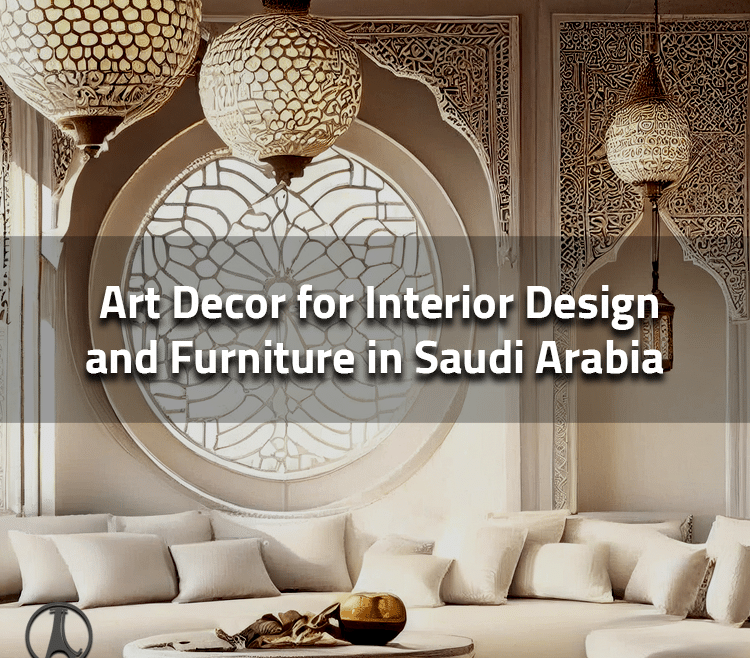
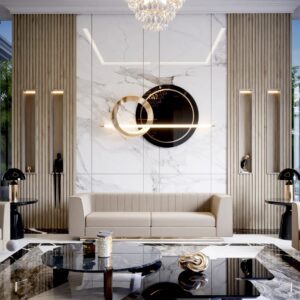
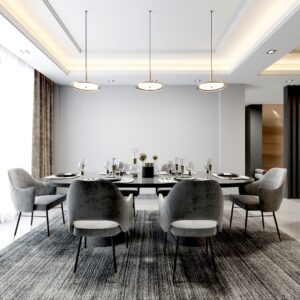
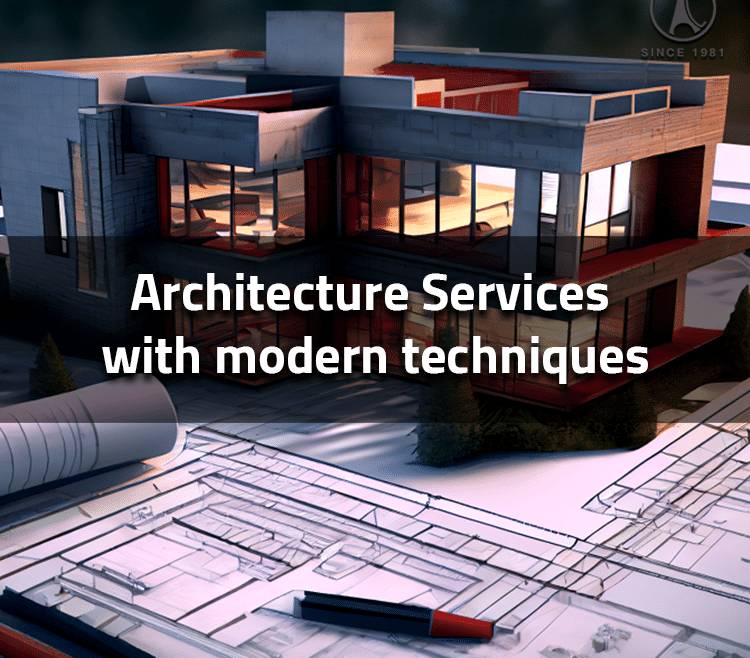
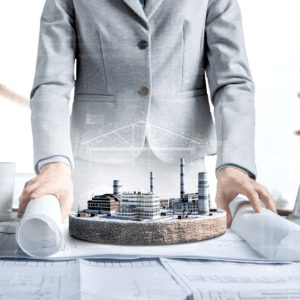
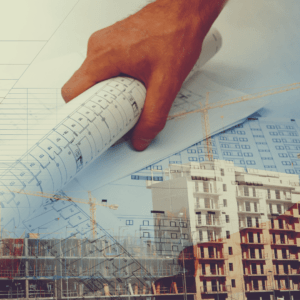
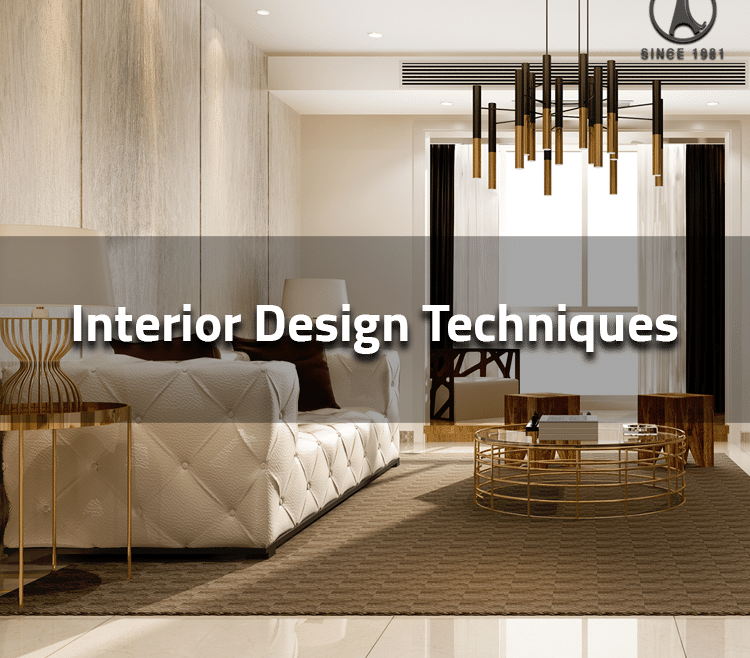

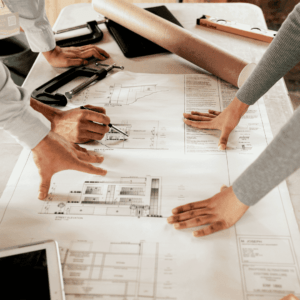
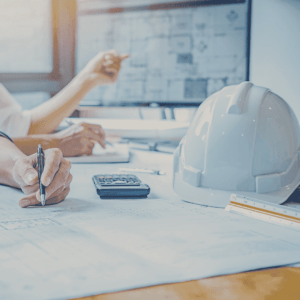
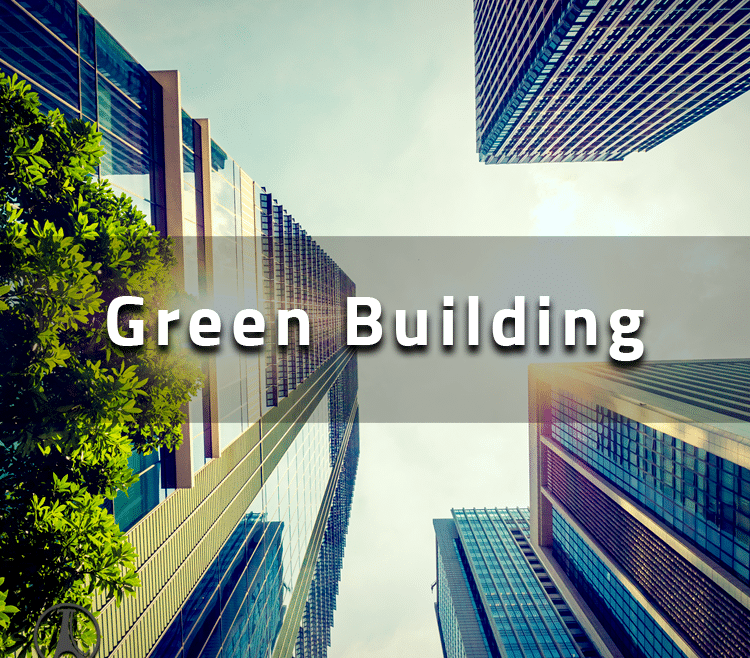
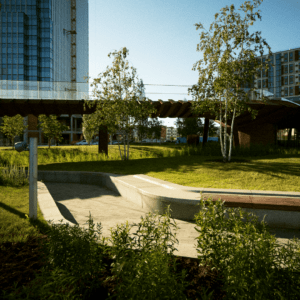 What is Green Building and Why is it Important?
What is Green Building and Why is it Important?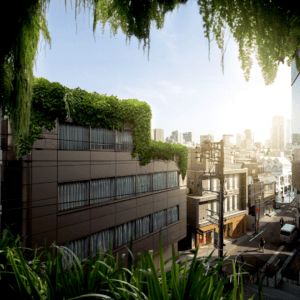 The Different Stages and Aspects of Green Building
The Different Stages and Aspects of Green Building